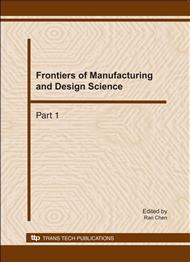p.3096
p.3100
p.3105
p.3109
p.3114
p.3119
p.3125
p.3130
p.3134
The Strengthened Mechanism of X70 Pipeline Steel Welded Joints by Laser Shock Processing
Abstract:
The X70 pipeline steel welded joint was processed to strengthen with laser shock wave, the structures of welded joint by laser shock wave were observed with Scanning Electric Microscope (SEM), and its surface residual stresses was analyzed with X-ray diffraction (XRD), the residual stress distributions of welded joint by laser shock processing were discussed, and the strengthened mechanism of X70 pipeline welded joint by laser shock processing was investigated. The experimental results shown that the phenomenon of grain fine is produced in the surface of X70 pipeline steel welded joint by laser shock processing, and compressive residual stress is formed in its surface layer, and improves the distribution of residual stress, which is benefit to increasing the capability of stress corrosion resistance for X70 pipeline steel welded joint.
Info:
Periodical:
Pages:
3114-3118
Citation:
Online since:
December 2010
Authors:
Price:
Сopyright:
© 2011 Trans Tech Publications Ltd. All Rights Reserved
Share:
Citation:


